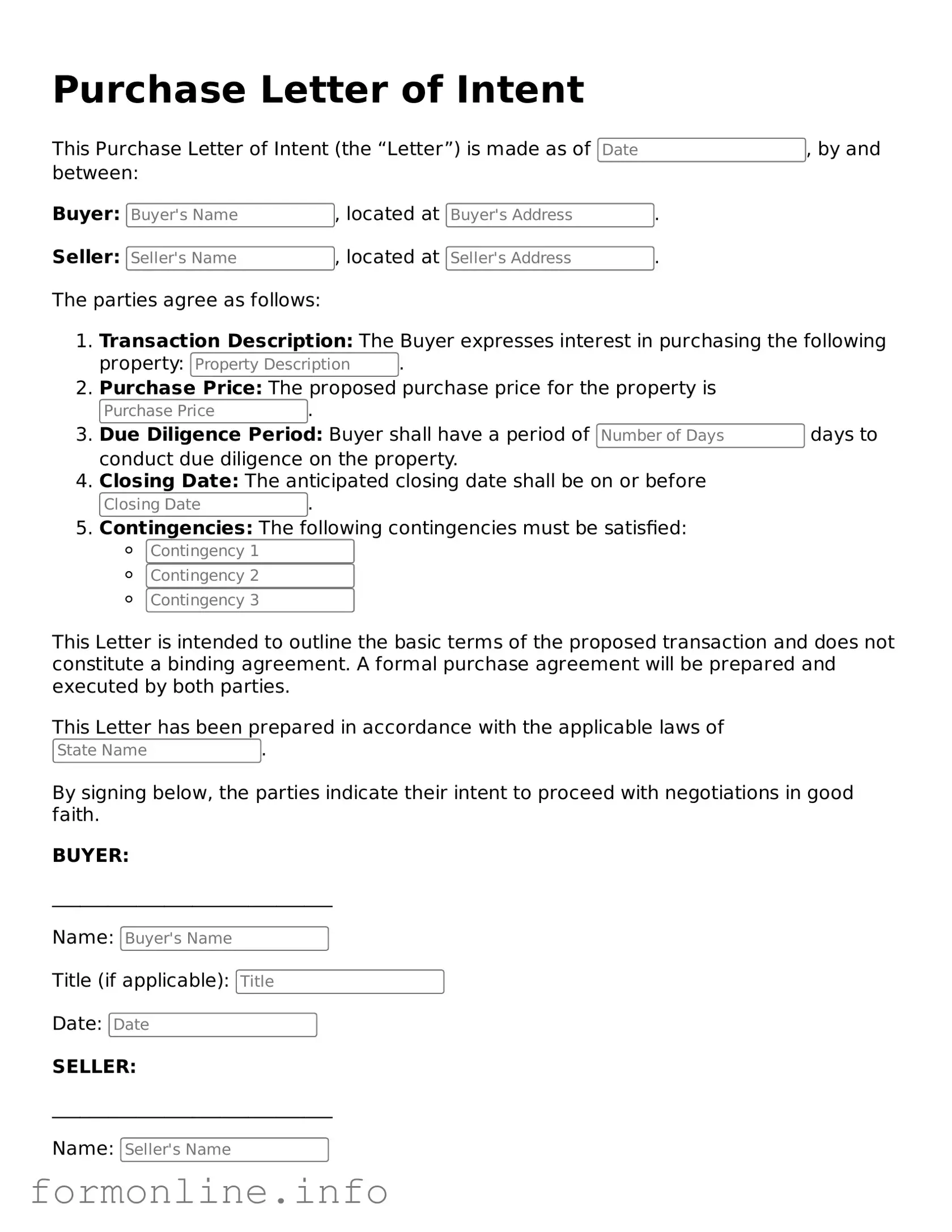A Purchase Agreement is a formal contract that outlines the terms and conditions of a sale between a buyer and a seller. Like a Purchase Letter of Intent, it serves as a foundation for the transaction. However, while the Purchase Letter of Intent expresses an interest in proceeding with negotiations, the Purchase Agreement is binding and contains detailed provisions regarding price, payment terms, and other critical elements of the sale.
A Memorandum of Understanding (MOU) is another document that shares similarities with a Purchase Letter of Intent. An MOU outlines the intentions of the parties involved, similar to the way a Purchase Letter of Intent does. However, an MOU is often less formal and may not be legally binding. It is used to clarify the intentions of both parties before entering into a more formal agreement.
A Non-Binding Letter of Intent serves a similar purpose to a Purchase Letter of Intent but emphasizes that the parties do not intend to create any legal obligations at this stage. This document outlines the proposed terms of a deal, allowing parties to negotiate without the pressure of a binding agreement. It provides a framework for discussions while maintaining flexibility.
A Term Sheet is a document that summarizes the key terms and conditions of a potential agreement. Like a Purchase Letter of Intent, it is often used in negotiations to ensure that all parties are on the same page. However, a Term Sheet is typically more detailed, covering aspects such as valuation, equity distribution, and governance structures, which may not be included in a Purchase Letter of Intent.
A Business Proposal outlines a plan for a business transaction or partnership. While a Purchase Letter of Intent expresses interest in a specific deal, a Business Proposal provides a comprehensive overview of how the transaction will work. It includes details about the products or services offered, pricing, and the benefits to both parties, helping to persuade the other party to move forward.
An Exclusivity Agreement is a document that grants one party exclusive rights to negotiate a deal for a specified period. Similar to a Purchase Letter of Intent, it reflects a commitment to pursue negotiations. However, it restricts the other party from engaging with competitors during the exclusivity period, ensuring that both parties can focus on finalizing the agreement without outside distractions.
A Confidentiality Agreement, also known as a Non-Disclosure Agreement (NDA), is used to protect sensitive information shared during negotiations. While a Purchase Letter of Intent may not include confidentiality provisions, it often leads to discussions where sensitive information is exchanged. A Confidentiality Agreement ensures that both parties keep proprietary information private, fostering a trustworthy negotiation environment.
Understanding the various documents related to purchasing can be crucial for both buyers and sellers. One document that stands out is the Purchase Letter of Intent, which serves as a foundational tool in negotiations. For those looking to navigate the complexities of educational requirements, it is similarly important to be aware of other significant forms, such as the smarttemplates.net California Homeschool Letter of Intent, which ensures compliance with state regulations while allowing families to take control of their child's education.
A Letter of Interest is a document that expresses a party's desire to explore a potential business opportunity. Similar to a Purchase Letter of Intent, it indicates interest but is usually less formal and does not outline specific terms. A Letter of Interest serves as an initial step in the negotiation process, allowing parties to gauge each other's interest before committing to more detailed discussions.
A Sales Proposal is a document that outlines the terms of a sale, including pricing, delivery, and service options. While a Purchase Letter of Intent expresses a desire to negotiate, a Sales Proposal provides specific details about the offer being made. It is often used to persuade the buyer and can lead to a formal agreement once both parties agree on the terms.
